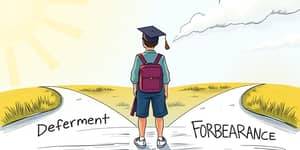In 2025, facing the staggering total U.S. student loan debt of $1.77 trillion can feel like an insurmountable challenge. Yet with foresight, discipline, and actionable steps, students and families can pursue higher education without surrendering their financial future. This guide offers practical, data-driven methods to minimize or entirely avoid student loan burdens.
Understanding the Burden of Student Loan Debt
As of early 2025, approximately 42.7 million Americans carry federal student loans, with an average undergraduate borrower owing about $29,300 in debt. For older borrowers (ages 50–61), that figure climbs to roughly $46,790. These numbers underscore how quickly interest compounds and debt accumulates without a clear plan.
Before adopting any strategy, it’s critical to grasp the factors driving loan growth:
Rising tuition costs, compounding interest rates, and borrowing without understanding repayment terms all contribute to mounting balances. Disparities in debt levels—especially among marginalized groups—further emphasize the need for early, inclusive planning.
Practical Tips Before You Enroll
Smart decisions made before classes begin can drastically reduce borrowing needs. Consider these cost-effective education pathways to keep tuition expenses low:
- Attend community colleges or state schools to complete general education credits.
- Apply for a diverse range of scholarships and grants based on merit, need, or special talents.
- Enroll in work-study programs or secure part-time jobs to earn income during semesters.
- Explore hybrid or online degree options that offer lower overhead costs.
Each dollar earned or saved before borrowing translates directly into lower loan principal and future interest accrual.
Borrow Responsibly and Strategically
When loans are necessary, adopt a cautious borrowing approach. Always borrow only what is necessary and prioritize federal loans over private alternatives due to their favorable terms and protections.
Key considerations include:
- Understanding interest rates and origination fees associated with each loan.
- Comparing fixed versus variable rates to predict long-term costs.
- Reviewing grace period lengths and deferment options before signing.
By limiting loans to essential educational expenses, students can keep their debt manageable and focused on academic success.
Government Programs and Forgiveness Opportunities
Federal programs exist to ease repayment for certain professions and income levels. Leveraging these options can have a transformative impact on total costs:
Public Service Loan Forgiveness (PSLF) offers debt cancellation after 10 years of qualifying payments for government and nonprofit employees. Teacher Loan Forgiveness can erase up to $17,500 for eligible educators in low-income schools. Income-Driven Repayment (IDR) plans cap monthly payments based on earnings and forgive remaining balances after 20–25 years, with tax-free status through 2025.
Enrollment requires careful documentation and on-time filings, but for students pursuing public service careers, these programs embody life-changing financial relief.
Managing and Repaying Loans Post-Graduation
After graduation, proactive repayment strategies can shrink balances quickly and limit interest accumulation:
- Make extra payments on the loan principal to reduce the amount on which interest is calculated.
- Enroll in automatic payments to secure automatic payment interest rate discounts (often 0.25%).
- Revisit repayment plans annually and switch to more aggressive options as income increases.
Even small additional contributions—for example, an extra $25 per month—can save hundreds in interest over a 10-year repayment period.
Temporary Relief: Deferment and Forbearance
Life events such as illness, job loss, or family emergencies can disrupt repayment. Federal deferment and forbearance programs allow borrowers to pause payments temporarily without default, though interest may continue to accrue on unsubsidized loans.
While these measures do not eliminate debt, they protect credit scores and prevent delinquency. Use them sparingly and only as a bridge to stability.
Building Financial Literacy and Sustainable Budgeting Habits
Financial education empowers students to make informed choices at every stage. Essential practices include:
– Tracking expenses monthly to identify areas for savings. – Creating a realistic post-graduation budget that includes loan payments. – Consulting free financial counseling services offered by colleges or nonprofit organizations.
By strengthening long-term financial health, students can avoid the pitfalls of unplanned borrowing and maintain control over their future.
Conclusion: Empowering Your Financial Future
Student debt need not cast a shadow over your academic ambitions. With rigorous planning, responsible borrowing, and informed use of government programs, you can pursue higher education while safeguarding your financial well-being. Start early, stay disciplined, and remember: every strategic choice you make today brings you one step closer to a debt-free tomorrow.
References
- https://educationdata.org/student-loan-debt-statistics
- https://www.bestcolleges.com/research/average-student-loan-debt/
- https://educationdata.org/student-loan-debt-by-age-group
- https://www.nerdwallet.com/article/loans/student-loans/student-loan-debt
- https://smartasset.com/data-studies/student-loan-debt-2025
- https://www.nerdwallet.com/article/loans/student-loans/student-loan-forgiveness
- https://www.investopedia.com/articles/personal-finance/082115/10-tips-managing-your-student-loan-debt.asp
- https://libertystreeteconomics.newyorkfed.org/2025/05/student-loan-delinquencies-are-back-and-credit-scores-take-a-tumble/










